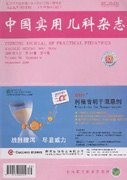With the rapid development of pediatric critical care medicine in recent years,the mortality of children in intensive care unit(ICU) has decreased significantly. A large proportion of surviving patients still have physical dysfunctions several years after discharge. The functional status and quality of life of these patients begin to become focus problems,and pediatric critical care rehabilitation,a new interdisciplinary field,has attracted people’s attention. Rehabilitation evaluation runs throughout the medical activities of pediatric critical care rehabilitation. Because the related work began late with weak foundation in our country,it hasn’t been done in many hospitals yet. Therefore,it is urgent to realize the importance of rehabilitation evaluation and to improve the pediatric critical care rehabilitation and rehabilitation evaluation.

